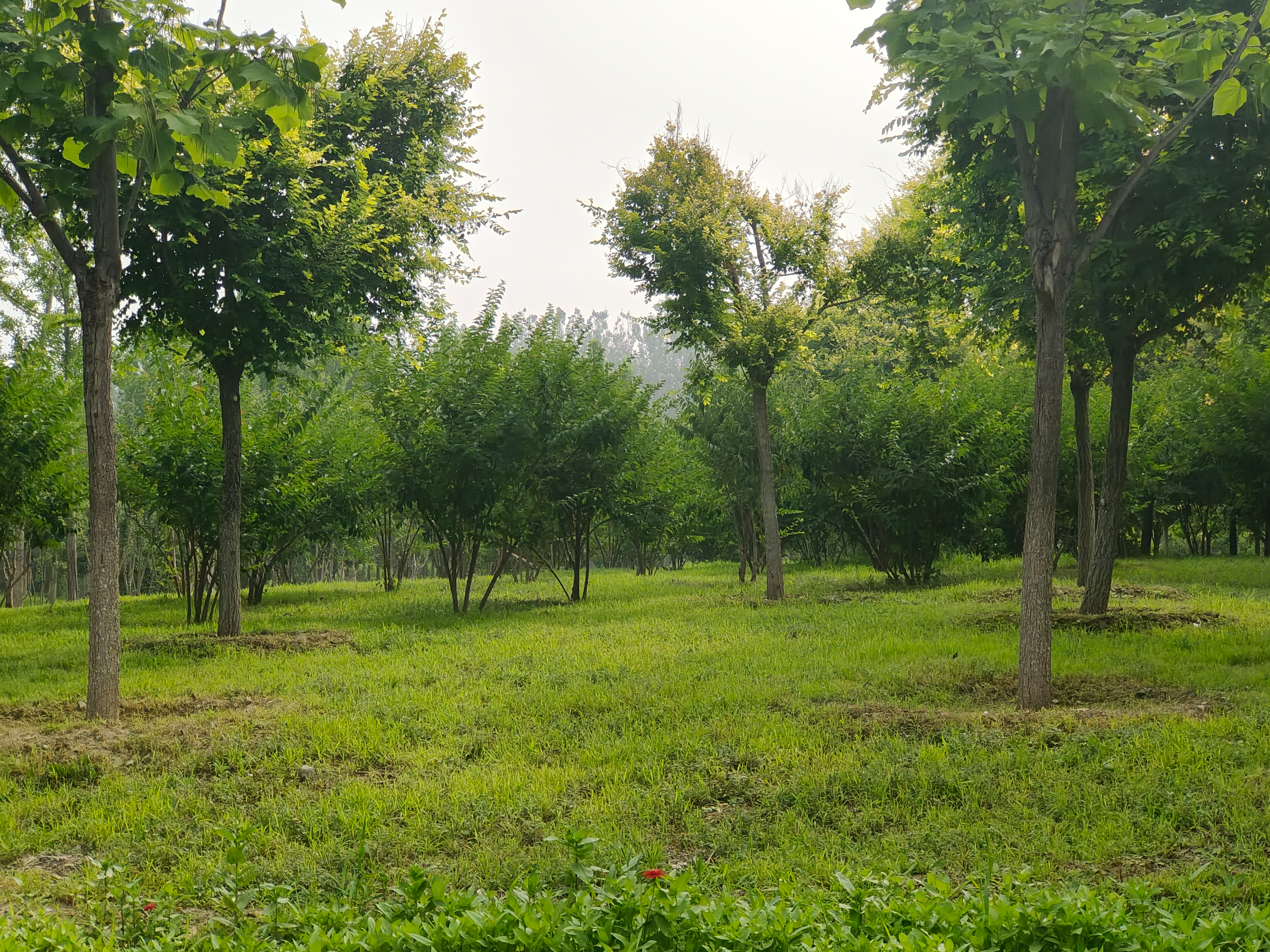How can parks achieve carbon cycles? Find the answer in this park in Beijing!
Ximazhuang Park is located in Tongzhou District, Beijing City. In summer, residents stroll comfortably with colorful flowers and trees. However, hidden in these vibrant flowers and plants are secrets about "carbon".
Currently, Beijing City is making every effort to promote the construction of a garden city. A high-level landscaping waste treatment and resource utilization system can turn waste into treasure, waste into green, and better exert the "green lung effect." At the same time, through ecological and high-value recycling of plant source waste, it can also promote carbon capture, carbon utilization and carbon sequestration, and further consolidate and enhance the ecosystem's carbon sink capacity.
So, under the background of the implementation of the "double carbon" strategy, how does Ximazhuang Park improve plant carbon sequestration efficiency and soil carbon sequestration capacity?
What is a carbon cycle park?
It is understood that before the completion of Ximazhuang Park, it was originally a waste recycling market with an area of about 66,000 square meters and a service radius of about 2.5 kilometers. Only after being listed as a green space project in 2018 did the construction of the carbon cycle park begin.

The picture shows Ximazhuang Park. Photo by Shang Yu
So, what is a carbon cycle park?
The carbon cycle refers to the phenomenon in which carbon is exchanged in the earth's biosphere, lithosphere, hydrosphere and atmosphere, and circulates with the earth. Through the natural carbon cycle, negative carbon emissions can be achieved by using new technologies to absorb, capture and store carbon dioxide in the process. That is to say, ecosystem carbon sinks are the main means to achieve carbon removal.
"Parks that restore natural ecology by natural methods are carbon cycle parks." Wang Xiaoxu, head of the plant-derived biomass heat treatment team at Beijing Forestry University, said that cities are the main source of carbon dioxide emissions. For the landscaping industry, utilizing the carbon-negative capacity of urban forest land and green spaces is a strong point. Grasping and improving their carbon-negative capacity can effectively Enhance current ecological, economic and social benefits and achieve the synergy of high-level protection and high-quality development.
"The 'carbon cycle park' here is different from the 'near-zero carbon park'." Wang Xiaoxu said that the latter means that the park's carbon emissions and carbon absorption values are almost the same, emphasizing the balance of carbon dioxide absorption and emission. Carbon cycle parks are "carbon banks" based on parks, realizing more recycling, utilization and storage of carbon elements in parks, improving the carbon reserves of urban green ecosystems, and avoiding carbon leakage and waste to a certain extent.
In Ximazhuang Park, the maintenance of forests and flowers does not use chemical fertilizers and pesticides. Instead, it uses BECCUS technology (plants realize carbon capture, utilization and storage through the conversion of biomass energy) to treat garden waste such as dead branches and leaves. After heat treatment, it effectively captures greenhouse gases such as urban carbon dioxide, forms a variety of plant-derived ecological fertilizers, feeds back plants and green spaces, increases plant growth accumulation and forest carbon reserves, and realizes carbon cycle.
"Plant source ecological fertilizers produced by plant source biomass after heat treatment include two types: solid rot material and liquid fertilizer. Compared with the use of chemical fertilizers and pesticides, this technology can save parks 10%-15% of maintenance costs, and reduce mineral mining and non-point source pollution." Wang Xiaoxu further explained.
The park itself is a "carbon pool"
What is the effect after "green waste" becomes "green manure"?
In order to regularly monitor the changes in the park's biomass, according to Ning Jianshe, the person in charge of Ximazhuang Park, by using a piggyback portable lidar scanning system to scan the three-dimensional lidar point cloud of the park vegetation, the breast height of forest trees can be quickly calculated and obtained. Parameters such as breast height, crown width, tree height, and tree location greatly reduce the workload of manual surveys and improve the efficiency and accuracy of forest resource surveys.
"Since the launch of the project in 2021, the flowers, leaves, and branches grown on forests and forests using plant-derived ecological fertilizers have larger flowers, thicker leaves, and dense branches than those grown on ordinary chemical fertilizers. The flowering period has also been extended by about 1 week., the autumn leaves are about 2 weeks late, the soil is more fertile, and the trees 'resistance to diseases, pests and immunity are also significantly enhanced." Ning Jianshe said.
"After obtaining above-ground forest biomass information, we can visualize forest and grass carbon sinks by estimating forest carbon storage data." Ning Jianshe added.
According to statistics, 1 ton of garden pruning can fix an additional 0.37 tons to 0.45 tons of carbon dioxide, which is 3.7 times to 4.5 times the carbon fixation amount of daily compost, and can be made into 60 tons of liquid fertilizer. To ensure the health of an acre of forest land, a total of 4 tons of liquid fertilizer is needed a year.
According to Wang Xiaoxu, 100 acres of forest land in Ximazhuang Park can produce about 45 tons of garden waste a year, can fix an additional 16.65 tons-19.8 tons of carbon dioxide, and produce 2700 tons of liquid fertilizer. All of which can be recycled and can save water by about 30%., while achieving negative carbon emissions.
"Using garden waste heat treatment equipment, the process from feeding to fertilization can be completed in 30 minutes. In this way, the waste generated in the park can be solved on-site, which not only improves the park's carbon sequestration capacity and ecological service value, but also reduces forest land and soil pollution, thereby achieving systematic management." Wang Xiaoxu told reporters.

The picture shows a goldfinch resting on a branch. Photo provided by Wang Xiaoxu
"The construction of parks cannot be beautiful for the sake of beauty." Wang Xiaoxu said that during the construction process, appropriate wilderness should also be carried out. Nowadays, many birds, small rodents, etc. have been found in the park, and rich biodiversity will be more conducive to systematic management.
"In the future, we will accelerate green technology innovation and the promotion and application of advanced green technologies, and contribute green solutions to help build waste-free cities, garden cities and biodiversity capitals." Wang Xiaoxu said.







